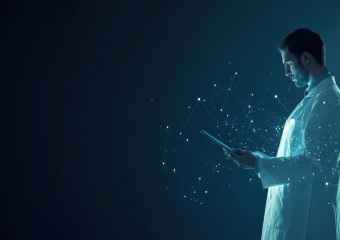Smart Triage: Exclusive, Effortless Symptom Clustering
Smart Triage in Telehealth: Predictive Symptom Clustering Explained
Understanding Smart Triage in Telehealth
Smart triage is transforming telehealth by enhancing the efficiency and accuracy of patient assessment before they even speak with a healthcare provider. This innovative approach uses predictive symptom clustering to foresee patient needs and streamline the triage process. By doing so, it not only prioritizes patient care based on urgency but also customizes the healthcare journey right from the initial point of contact.
The Role of Predictive Symptom Clustering
At the heart of smart triage systems in telehealth is predictive symptom clustering, a sophisticated technique that leverages data analytics and machine learning. This method involves the analysis of vast amounts of health data, including symptoms, medical histories, and demographic information, to identify patterns and correlations that might not be apparent to even the most experienced healthcare professionals.
Predictive symptom clustering groups together patients with similar symptoms and demographic profiles, anticipating potential diagnoses and medical needs. This classification helps medical professionals to assess cases more accurately and quickly, prioritizing those that may require immediate attention and efficiently directing resources where they are most needed.
Enhancing Patient Care and System Efficiency
The application of smart triage in telehealth provides a dual benefit: improving the patient experience and enhancing health system efficiency. For patients, this means receiving quicker, more focused attention based on the predicted urgency and nature of their condition. They are routed to the appropriate healthcare provider without unnecessary delays, ensuring timely and targeted treatment.
For healthcare systems, predictive symptom clustering minimizes bottlenecks and optimizes resource allocation. It reduces the strain on healthcare workers by automating part of the diagnostic process, allowing them to concentrate on treatment rather than initial assessments. Moreover, this efficiency can lead to reduced operational costs and improved overall healthcare delivery.
How Predictive Symptom Clustering Works
Predictive symptom clustering employs algorithms that continuously learn and adapt from new data. As patients interact with telehealth platforms, their data is collected and analyzed in real-time. This allows the system to constantly refine its predictions and recommendations for future cases.
These algorithms can also integrate with other technologies, such as electronic health records (EHR), to pull in comprehensive patient data, enhancing the accuracy of the clustering process. The integration ensures that the system’s predictions are based on a holistic view of each patient, considering both past medical history and present symptoms.
The Future of Telehealth and Smart Triage
The future of smart triage in telehealth looks promising, with potential developments that could further revolutionize patient care. Advances in artificial intelligence (AI) may lead to even more precise symptom clustering, potentially integrating genetic information and real-time biometric data. This could pave the way for highly personalized healthcare, where treatments are tailored not just to symptoms but to individual biological profiles.
Moreover, as these systems become more refined, they could also play a pivotal role in managing public health crises, like pandemics, by quickly identifying and responding to emerging health threats based on symptom clustering from across the globe.
Challenges and Considerations
While the prospects are exciting, the implementation of smart triage systems in telehealth is not without challenges. Privacy concerns, data security, and the need for massive data sets for accurate machine learning pose significant hurdles. Additionally, there’s the ongoing need to ensure these systems are accessible and equitable, avoiding biases that could affect certain populations disproportionately.
Conclusion
Smart triage powered by predictive symptom clustering is set to redefine telehealth, making it more responsive, efficient, and patient-centric. By harnessing the power of AI and big data, this approach promises not only to improve individual patient outcomes but also to enhance the broader healthcare landscape. As this technology evolves, it will be crucial to navigate the challenges carefully to fully realize its potential in transforming healthcare delivery.










